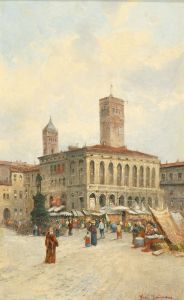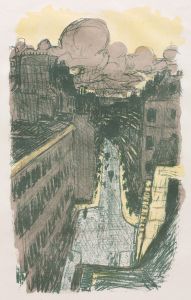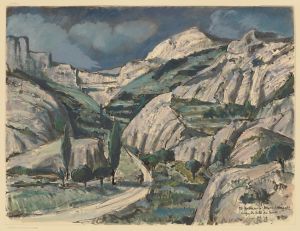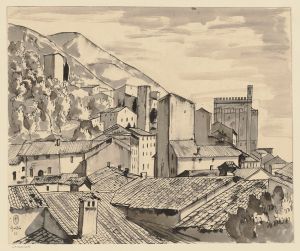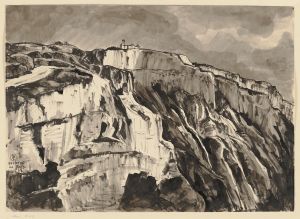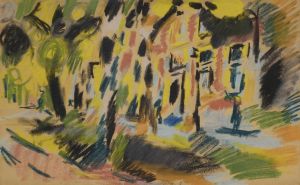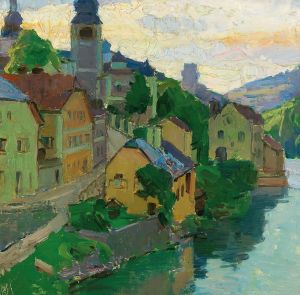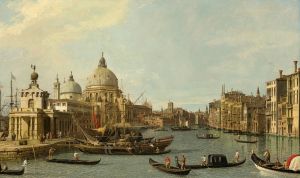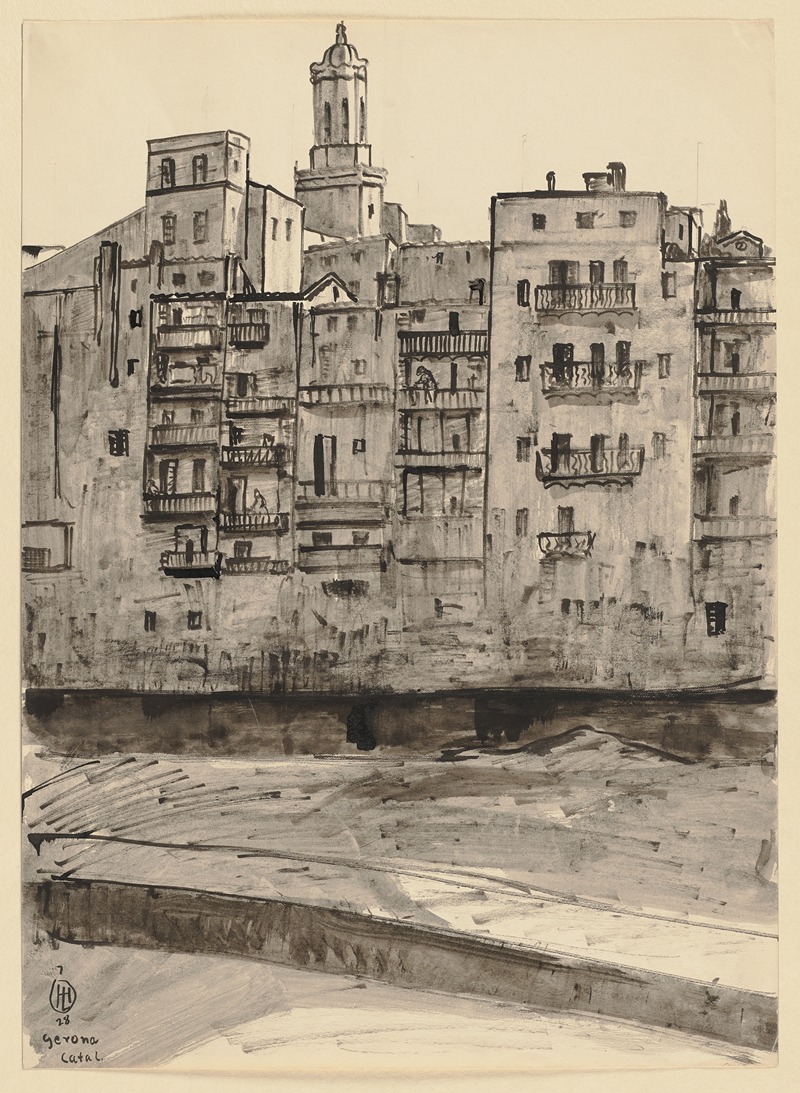
Girona vom Fluss aus gesehen, im Hintergrund der Turm der Kathedrale
A hand-painted replica of Hermann Lismann’s masterpiece Girona vom Fluss aus gesehen, im Hintergrund der Turm der Kathedrale, meticulously crafted by professional artists to capture the true essence of the original. Each piece is created with museum-quality canvas and rare mineral pigments, carefully painted by experienced artists with delicate brushstrokes and rich, layered colors to perfectly recreate the texture of the original artwork. Unlike machine-printed reproductions, this hand-painted version brings the painting to life, infused with the artist’s emotions and skill in every stroke. Whether for personal collection or home decoration, it instantly elevates the artistic atmosphere of any space.
Hermann Lismann (1878–1943) was a German painter known for his contributions to the Impressionist and Expressionist movements. One of his notable works is "Girona vom Fluss aus gesehen, im Hintergrund der Turm der Kathedrale" (Girona Seen from the River, with the Cathedral Tower in the Background). This painting captures a picturesque view of the city of Girona in Catalonia, Spain, highlighting the architectural beauty of the Girona Cathedral.
Lismann's painting depicts the cityscape of Girona from the vantage point of the river, likely the Onyar River, which runs through the city. The composition focuses on the harmonious blend of natural and man-made elements, with the river in the foreground and the historic buildings of Girona rising behind it. The most prominent feature in the background is the tower of the Girona Cathedral, a significant landmark in the city.
The Girona Cathedral, also known as the Cathedral of Saint Mary of Girona, is a Roman Catholic church that boasts a mix of architectural styles, including Romanesque, Gothic, and Baroque elements. The cathedral's construction began in the 11th century and continued over several centuries, resulting in its eclectic architectural character. The tower that Lismann features in his painting is part of this historic structure, which dominates the skyline of Girona.
Hermann Lismann's artistic style in this painting reflects his training and influences from both the Impressionist and Expressionist movements. His use of color and light captures the vibrant atmosphere of the city, while his brushwork conveys a sense of movement and life. The painting likely dates from the early 20th century, a period when Lismann was actively producing works that explored various European landscapes and cityscapes.
Lismann's career was marked by his travels and his engagement with different artistic communities across Europe. Born in Germany, he studied at the Academy of Fine Arts in Munich and later in Paris, where he was influenced by the works of the French Impressionists. His experiences in different cultural settings enriched his artistic vision, allowing him to create works that resonate with a sense of place and history.
Tragically, Hermann Lismann's life and career were cut short by the events of World War II. As a Jewish artist, he faced persecution under the Nazi regime and was ultimately deported to the Auschwitz concentration camp, where he perished in 1943. Despite the tragic end to his life, Lismann's works continue to be appreciated for their artistic merit and historical significance.
"Girona vom Fluss aus gesehen, im Hintergrund der Turm der Kathedrale" stands as a testament to Lismann's ability to capture the essence of a place through his art. The painting not only showcases the beauty of Girona but also reflects the broader cultural and historical context of early 20th-century Europe. Through this work, viewers can appreciate Lismann's skill in rendering architectural and natural elements with a sense of harmony and vitality.





